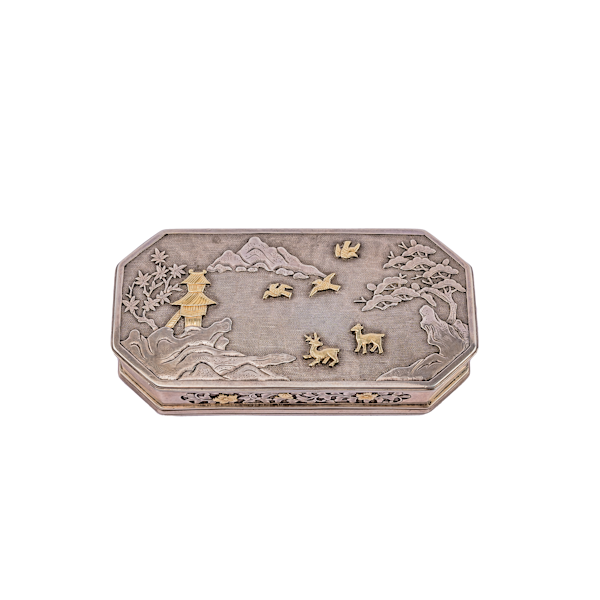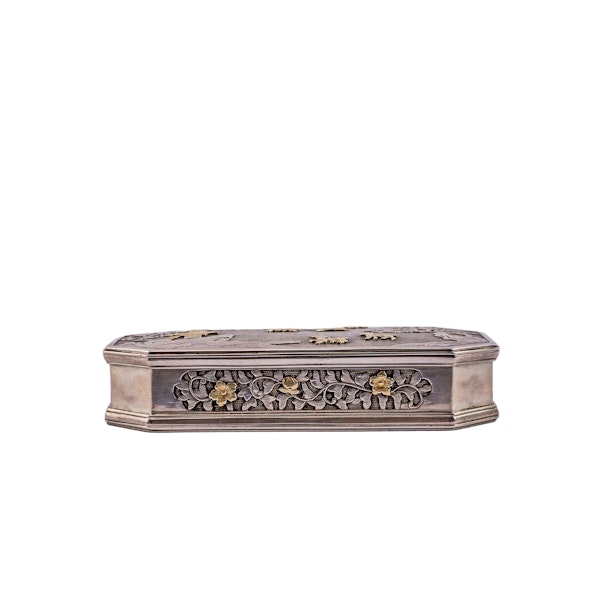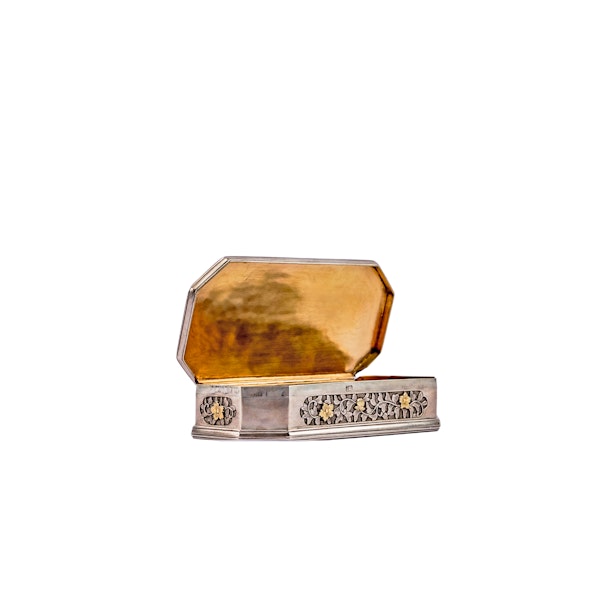18th century Japanese silver with gold appliques elongated octagonal tobacco box
18th century Japanese silver with gold appliques elongated octagonal tobacco box
POA
Description
A fine 18th century Japanese silver with gold appliques elongated octagonal tobacco box for the export market with Dutch import mark, integrated hinge, gilded interior and engraved decoration to base.
Following the first direct contact between Japan and Portugal in the late 16th century, other European powers gradually began to gain trade concessions with the Japanese, the Dutch first arriving in 1600. Despite Japan’s continued isolationism throughout the 17th century, the trading links continued to grow with porcelain being the chief commodity in part due to the tumultuous political situation in China during this period which greatly reduced its capacity to trade. A growing appreciation for Japanese metalwork, its sophisticated techniques and quality also developed in this period. The Japanese adapted their craft to the European taste. This beautiful box ably demonstrates the rarefied taste and quality of the work produced in this period.
The lid of the box is decorated with a traditional landscape scene derived from Chinese artistic traditions. A golden pagoda is shown on a rocky outcrop with a mountainous scene in the background. The scene is framed by two trees with the centre showing a stag and a doe with three flying birds above all rendered in gold. The surface is decorated with very fine diaper punch work giving the whole scene a fine texture and tactile feel the whole scene being framed with a plain border.
The sides of the box, at the four cardinal points, are each decorated with a chased panel of trailing plants with leaves and flowers within cartouches, the flowers being highlighted in gold and the background embellished with diaper punch work.
The base of the box is decorated with a finely engraved eagle with spread wings. This motif bears a striking resemblance to the decoration found on the base of a Sawasa tobacco box illustrated in the exhibition ‘Sawasa – Japanese Export Art in Black and Gold 1650-1800’ held at the Rijksmuseum in 1998 catalogue no. B.11.3. This box is similarly decorated with a landscape incorporating stags and birds. The similarities suggest that despite the differences in materials and techniques used both items were possibly produced in the same workshop.
These luxurious boxes shaped according to European taste were commissioned by the great trading companies that grew in the 17th century. The most important of these was the Dutch East India Company which was a major trading partner with Shogun Japan and which sought new ways of importing luxury items to the burgeoning Dutch markets from where they were disseminated throughout Europe.
| item details | |
|---|---|
| Origin | Japanese |
| Period | 18th Century |
| Style | Other |
| Condition | Excellent |
| Dimensions | Weight:208 grams |
| Diameter | W:11.6cm H:2.3cm |
Product REF: 10017














